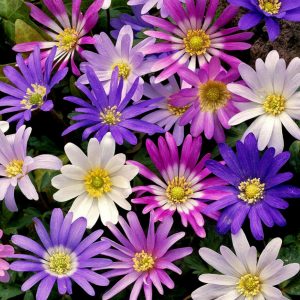Gladioli Summer Bulbs
0 reviews
Gladiolus
- Gladiolus, commonly known as Gladioli and Sword Lily are upright growing, easy to grow Summer flowering herbaceous perennial corm bulbs. These impactful upright growing plants loved by pollinating insects, in particular bees and butterflies will flower between late June and early July growing to an incredible 100 and 120 cm in height, adding impact wherever planted.
- These bulbs are great for growing in flower beds and garden borders or also in patio pots. Due to their taller nature they look great when planted in mixed flower displays along with Lilies, Dahlias, Begonias and Zinnias. Gladioli will continue to grow each year with little maintenance and can be used as cut flowers allowing you to enjoy them in your home and garden. For Winter protection, mulch them deeply with 6-7cm of compost to give them insulation from late Autumn.
- If you are not ready to plant bulbs now, then store them in a cool, dry, frost free, well ventilated location. A garage, shed, loft or cupboard are ideal. Open the paper bag to allow air to circulate round but leave the bulbs in their bags until ready to plant. Just make sure mice or other rodents can’t get access to them. Keep an eye on your bulbs while in storage, if they are showing signs of going soft, it's best to get them planted before they deteriorate any further.
-
Eventual Height
Between 100 and 120cm
-
Season of Interest
Late June to Early July
-
Light Required
Full sunlight
-
Watering
Moderate watering
-
Best Growing Conditions
Plant these gladioli bulbs during the Spring, around about late March to mid April in fertile, well draining slightly acid soil in full sun but they can cope in partial shade. These corms should be planted about 10-15 cm deep and 15 cm apart, with the slightly pointed end upwards and roots downwards. After planting, water well and keep gladioli moist, but avoid water logging the soil. They may need staking or netting to prevent them from blowing over. Inserting canes while planting helps avoid damaging the corms.








